Bed bugs are tiny pests that can cause big problems. These blood-sucking insects are hard to spot and even harder to eliminate if not caught early. If you live in the U.S., especially in urban areas or frequently travel, knowing how to check for bed bugs is essential. This guide will walk you through how to detect them early, complete with visual cues and size references.
What Are Bed Bugs?
Bed bugs are small, reddish-brown insects about the size of an apple seed (around 4–7 mm or 0.16–0.28 inches long). They hide in mattress seams, box springs, bed frames, and even electrical outlets. Bed bugs are active mostly at night and feed on human blood.
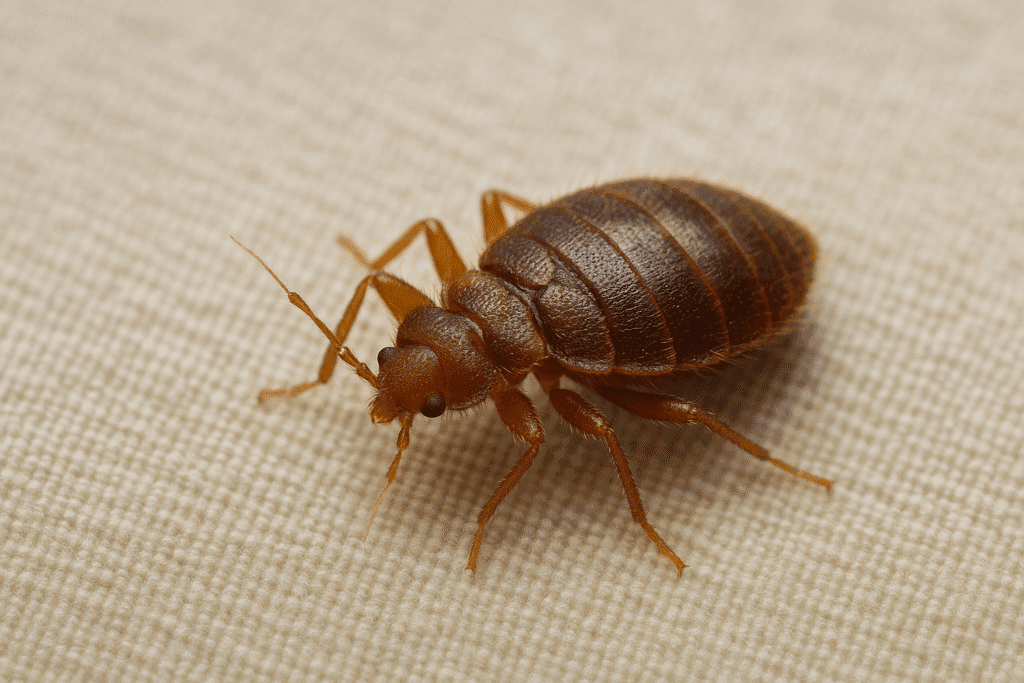
Tools You May Need:
- Flashlight or phone light
- Credit card or stiff piece of plastic
- Magnifying glass (optional)
- Gloves (optional for hygiene)
Where to Check for Bed Bugs
1. Mattress Seams and Tags
Lift the sheets and check along the seams and piping of your mattress. Look closely at the tags — bed bugs often hide there.
➡ Visual Tip: Look for tiny black spots (droppings), shed skins, or small rust-colored stains.
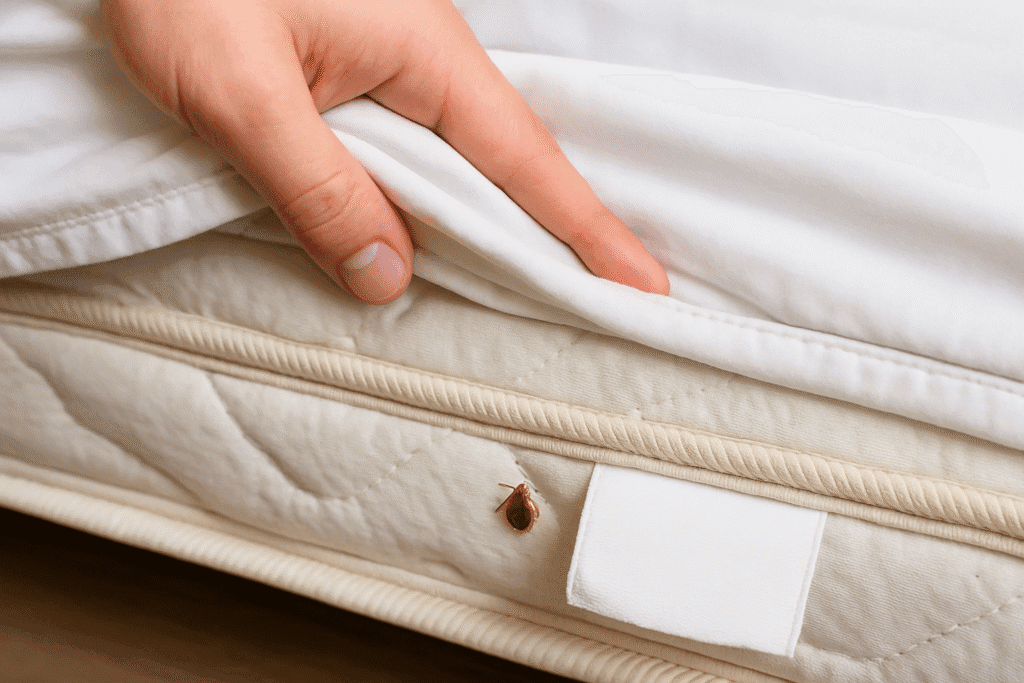
2. Box Spring & Bed Frame
Use a flashlight to inspect under the box spring and around the bed frame, especially in crevices and screw holes.
➡ Size Note: Bed bugs can squeeze into cracks as small as 1mm (about the thickness of a credit card).
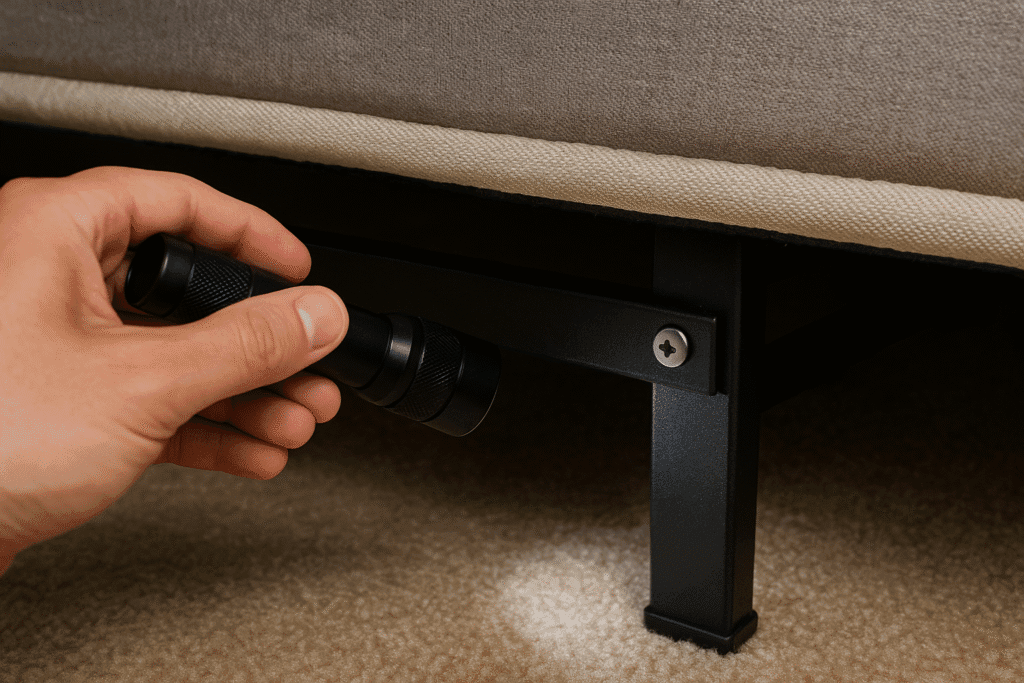
3. Headboard and Wall Area
Carefully check behind the headboard and nearby wall areas. Bed bugs often travel and hide within 5–10 feet of the bed.
➡ Visual Tip: Check screw holes and joints. Use a credit card edge to scrape small gaps.
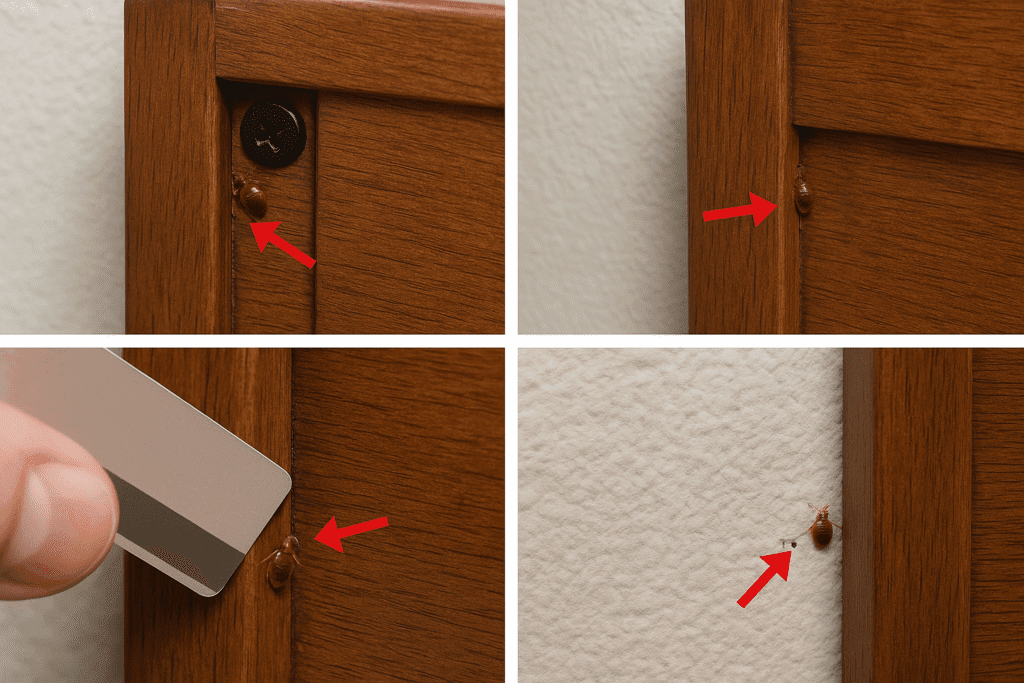
4. Furniture and Upholstery
Inspect couches, chairs, and nightstands near the bed. Pay attention to seams, zippers, and underneath cushions.
➡ Hotspot: Recliners and couches are common hiding places.
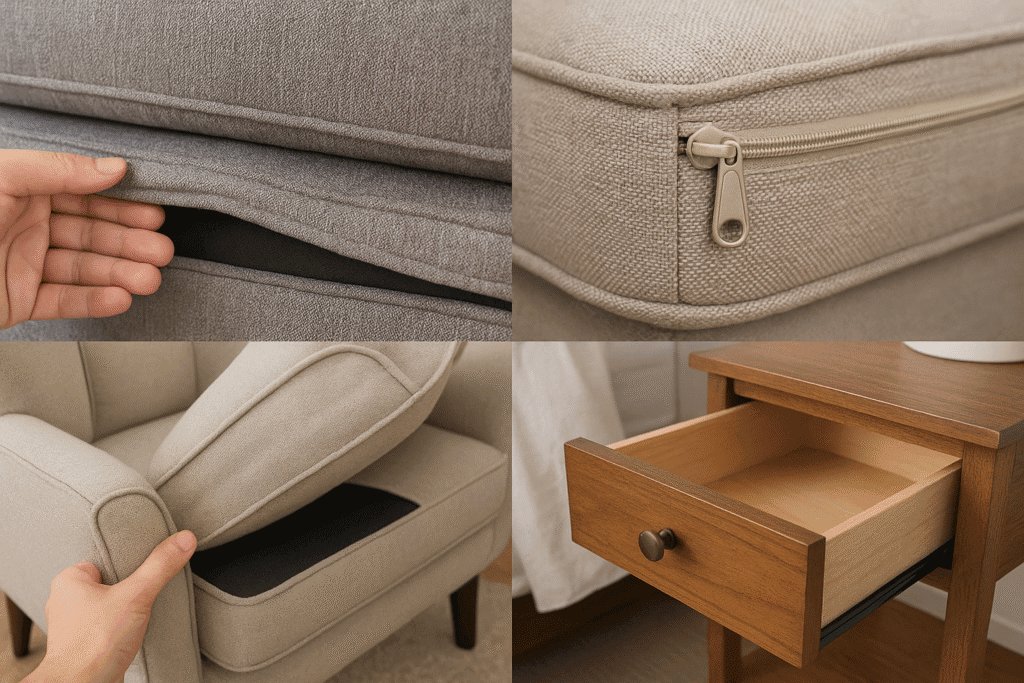
5. Luggage and Bags (for Travelers)
If you’ve recently traveled, inspect the seams of your suitcase and the clothes inside before bringing it into your bedroom.
➡ Pro Tip: Place luggage in the bathtub for inspection — bed bugs can’t climb smooth surfaces easily.

Signs of Bed Bug Infestation
- Tiny dark spots (fecal matter)
- Reddish stains on sheets (crushed bugs)
- Shed exoskeletons
- Musty odor near sleeping areas
- Red, itchy bites (usually in a line or cluster)
Preventative Tips
- Use a protective bed bug cover on mattresses and box springs.
- Reduce clutter to limit hiding places.
- Vacuum regularly and dispose of the bag or canister contents promptly.
- Be cautious with second-hand furniture — inspect thoroughly before bringing it inside.
Final Thoughts
Regular inspection is key to catching a bed bug infestation early. These tiny pests can be hard to find, but with patience and the right approach, you can stay ahead of them. Always check after traveling and when changing bed linens.
If you’re unsure, consider hiring a licensed pest control professional in your area.
Stay safe and sleep tight — without letting the bed bugs bite!!
